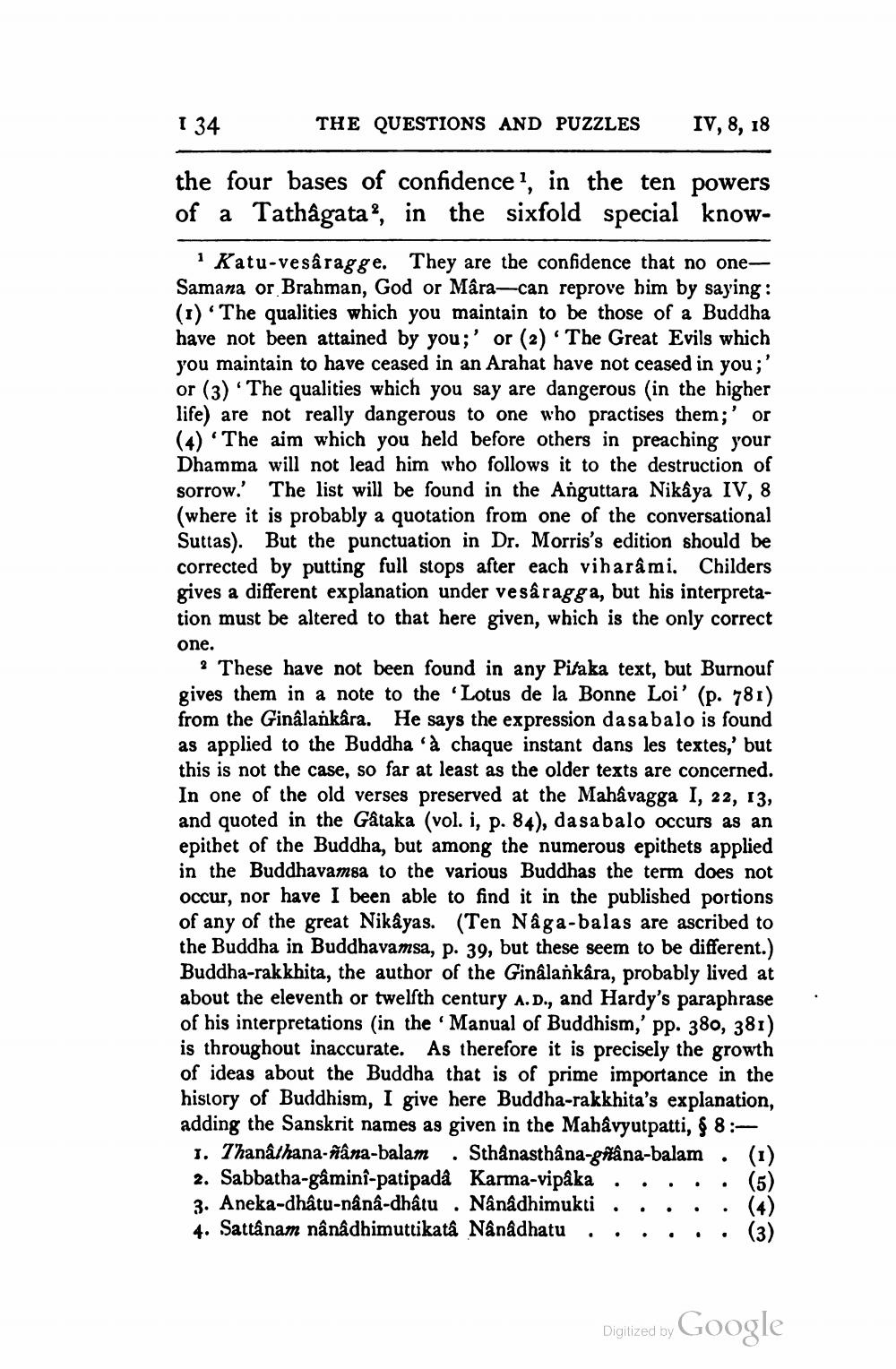________________
I 34
THE QUESTIONS AND PUZZLES
IV, 8, 18
the four bases of confidence, in the ten powers of a Tathagata, in the sixfold special know
i Katu-vesâragge. They are the confidence that no oneSamana or Brahman, God or Mâra-can reprove him by saying: (1) The qualities which you maintain to be those of a Buddha have not been attained by you;' or (2) The Great Evils which you maintain to have ceased in an Arahat have not ceased in you;' or (3) The qualities which you say are dangerous in the higher life) are not really dangerous to one who practises them;' or (4) The aim which you held before others in preaching your Dhamma will not lead him who follows it to the destruction of sorrow. The list will be found in the Anguttara Nikâya IV, 8 (where it is probably a quotation from one of the conversational Suttas). But the punctuation in Dr. Morris's edition should be corrected by putting full stops after each viharâmi. Childers gives a different explanation under vesâragga, but his interpretation must be altered to that here given, which is the only correct one.
? These have not been found in any Pitaka text, but Burnouf gives them in a note to the 'Lotus de la Bonne Loi' (p. 781) from the Ginâlankára. He says the expression dasa balo is found as applied to the Buddha'à chaque instant dans les textes,' but this is not the case, so far at least as the older texts are concerned. In one of the old verses preserved at the Mahavagga I, 22, 13, and quoted in the Gåtaka (vol. I, p. 84), dasabalo occurs as an epithet of the Buddha, but among the numerous epithets applied in the Buddhavamsa to the various Buddhas the term does not occur, nor have I been able to find it in the published portions of any of the great Nikayas. (Ten Någa-balas are ascribed to the Buddha in Buddhavamsa, p. 39, but these seem to be different.) Buddha-rakkhita, the author of the Ginalankára, probably lived at about the eleventh or twelfth century A.D., and Hardy's paraphrase of his interpretations in the Manual of Buddhism,' pp. 380, 381) is throughout inaccurate. As therefore it is precisely the growth of ideas about the Buddha that is of prime importance in the history of Buddhism, I give here Buddha-rakkhita's explanation, adding the Sanskrit names as given in the Maha vyutpatti, $ 8:
1. Thanåthana-ñâna-balam . Sthanasthana-gfâna-balam . (1) 2. Sabbatha-gamini-patipadá Karma-vipaka ..... 3. Aneka-dhâtu-nânâ-dhâtu. Nânâdhimukti .... 4. Sattânam nânâdhimuttikata Nânâdhatu . . . . . . (3)
Digitized by Google




